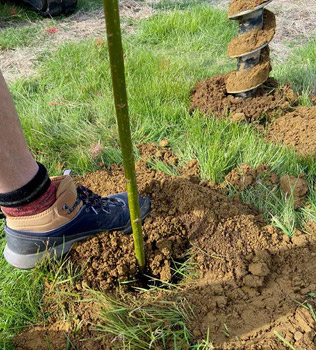Recently made a decision to plant 2500 willow whips amounting to 600 metres of willow rows through two fields on the farm. One field is permanent pasture for our herd of cows, the other is part of our 5 year organic garlic rotation. We were expertly guided through this process by Neil. We ended up planting a very thirsty species of tree at the beginning of the ‘drought’ in May and without Neil’s expert knowledge the whole project would surely have failed.






Growth after just 1 year. The Willow Mulch used on the bases improves weed control, moisture retention and soil fertility.
Sign up for regular news & Eco Crops information
We use cookies on this website to ensure you get the best experience.